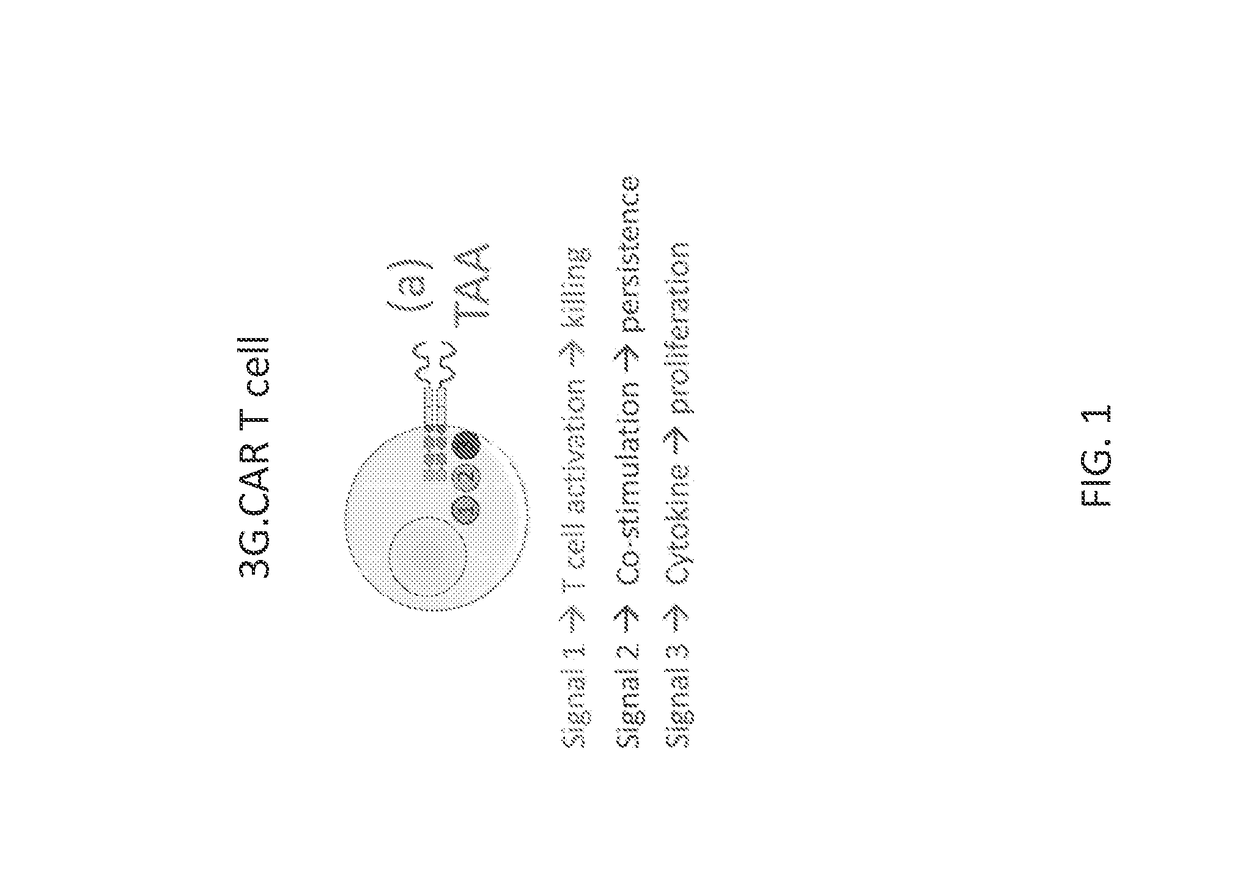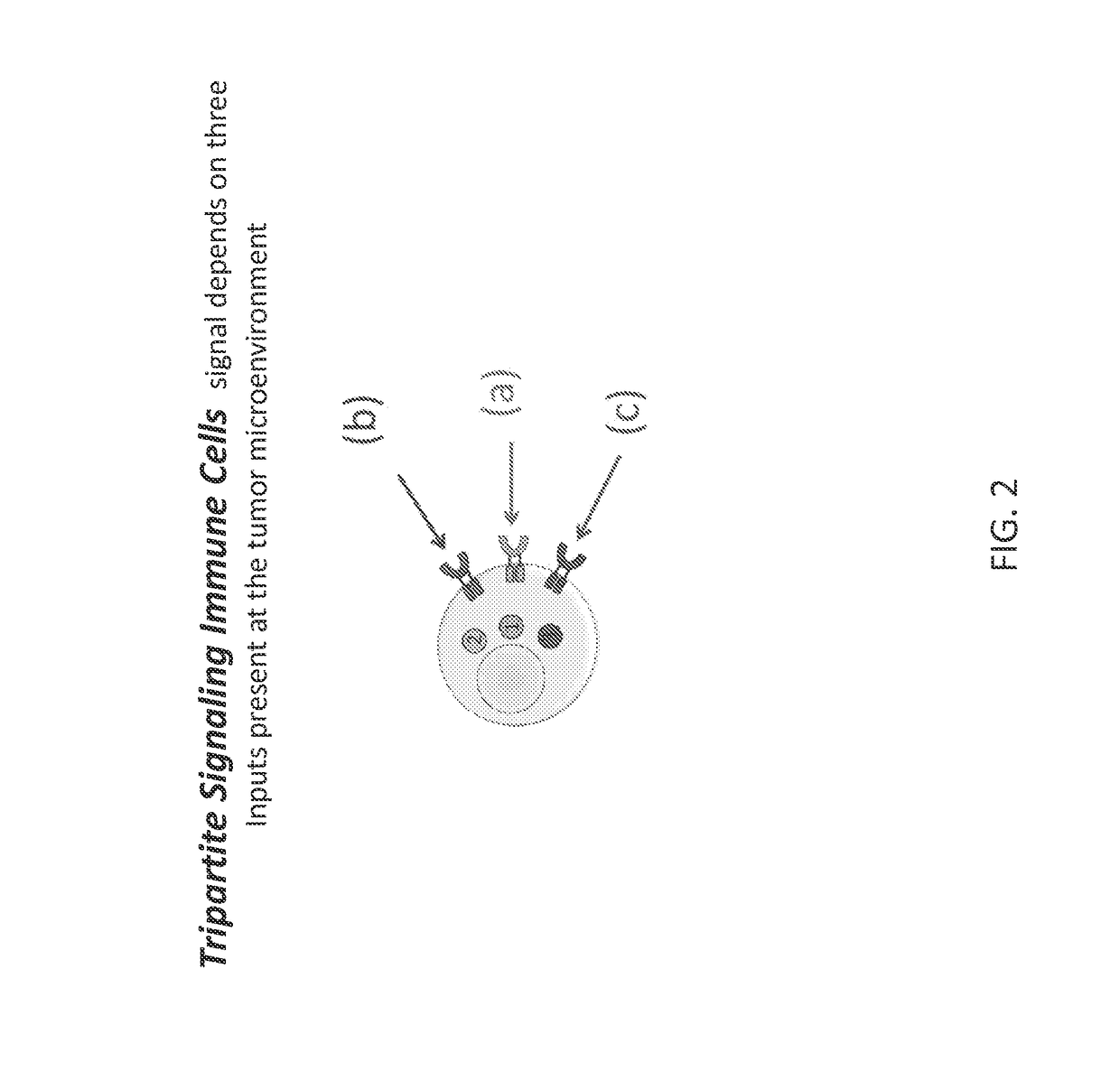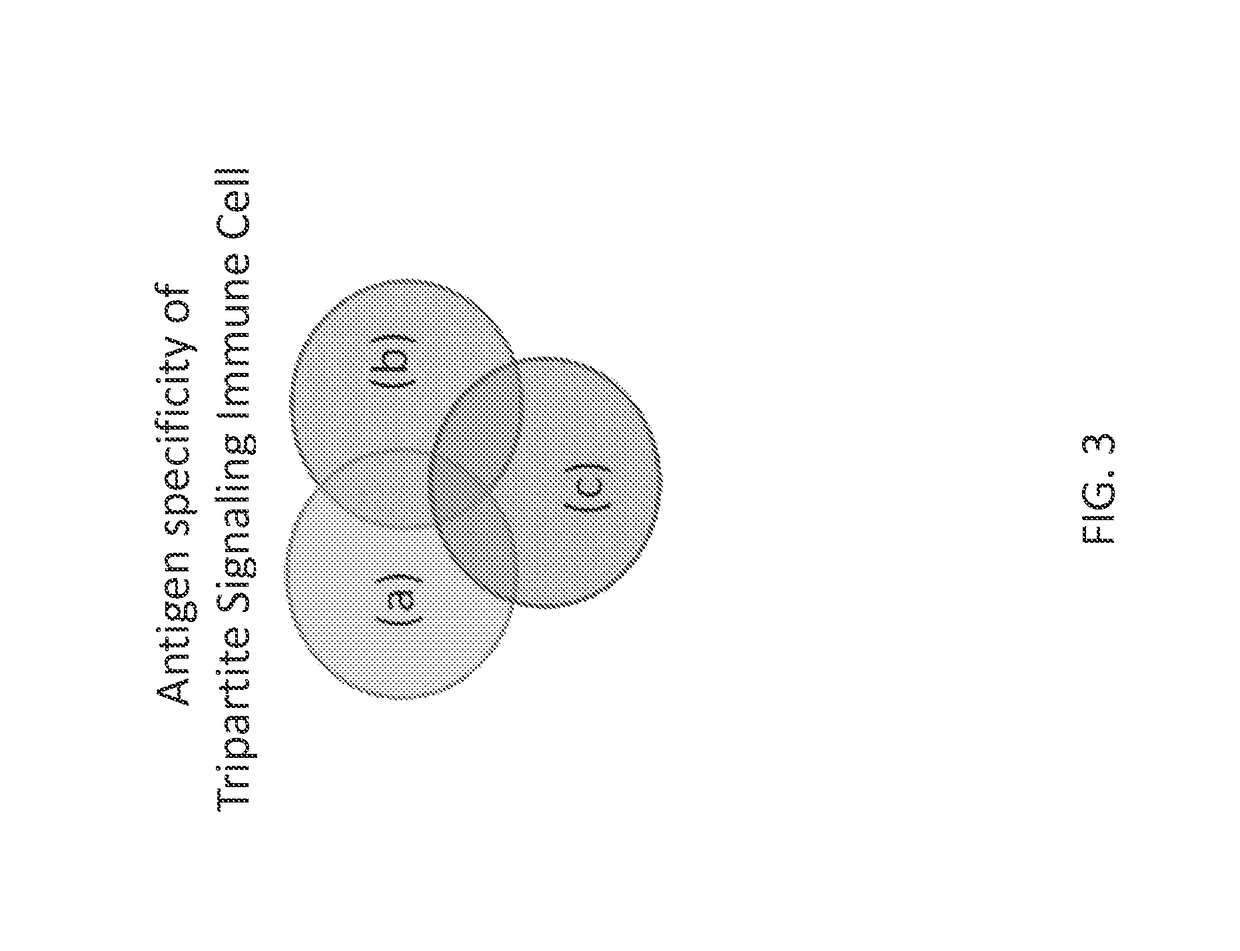Bipartite and tripartite signaling immune cells
a technology of immune cells and bipartite, applied in the field of bipartite and tripartite signaling immune cells, can solve the problems that patients treated with the later generation car have experienced toxicities associated with the therapy, and the engagement of the car cannot induce cytokine production or t cell expansion in vivo
- Summary
- Abstract
- Description
- Claims
- Application Information
AI Technical Summary
Benefits of technology
Problems solved by technology
Method used
Image
Examples
example 1
Tripartite Segnaling Immune Cells
[0165]In one embodiment, cells that recognize a combination of three signals present at the tumor microenvironment (for example) are provided. Embodiments encompass the generation of an immune cell whereby signals for antigen stimulation, co-stimulation, and cytokine signals are separated into three different molecules (such as receptors) rather than incorporating all signals together into a single molecule (such as a receptor), for example as in 3rd generation CARs (“3G.CARs”; FIG. 1). Therefore, in contrast to the 3rd generation CARs where the sole presence of the antigen results in the activation of these three different signal pathways, in embodiments contemplated herein the immune cells are fully activated (signal I, II and III) only in the presence of a particular molecular signature present only at a certain location, such as a tumor microenvironment (FIG. 2). Such an embodiment increases the specificity and safety of the immunotherapy.
[0166]T...
example 2
Bipartite Signaling Immune Cells
[0176]In another embodiment, cells that recognize a combination of only two signals present at the tumor microenvironment are provided. This can be accomplished by modifying immune cells to express two different molecules (such as receptors): (i) a molecule (such as a receptor) that recognizes a ligand (such as an antigen) and leads to TCR activation (for example, CD3z), with an example being a first generation CAR (or native or engineered T cell receptor) targeting a tumor antigen; and (ii) a receptor that recognizes a different ligand but transmits a cytokine signal (for example, IL7 endodomain), referred to in this application as bipartite signaling immune cells.
[0177]IL4 is present at elevated levels in primary pancreatic tumors. Logsdon and colleagues performed gene expression profiling on pancreatic adenocarcinoma and normal pancreas demonstrating elevated IL4 levels in pancreatic tumors (fold change 19.78, p=0.001) (FIG. 31A). IHC studies score...
example 3
Chuneruc T-BBR Receptor in Immune Cells
[0186]In particular embodiments, immune cells comprise a chimeric cytokine receptor that includes an exodomain of native TGFβR and an endodomain of the co-stimulatory molecule 4-1BB (“T-BBR”). T-BBR expression in CAR PSCA T cells (for example) enables the cells to overcome TGFβ inhibition.
[0187]Modification of 1G CAR T cells to express T-BBR did not affect CAR function, and the cells maintain cytolytic function of CAR T cells exposed to TGFβ (FIG. 21). FIG. 22 shows that T-BBR protected CAR T cells exposed to TGFβ. The bipartite-modified T cells expressing 1G CAR and T-BBR were able to eliminate tumor cells in presence of TGFβ while in contrast, the administration of TGFβ inhibited the cytolytic function and prevented elimination of target cells by 1G CAR T cells alone (FIG. 33). Furthermore, T-BBR alters gene expression of 1G CAR T cells (FIG. 23), yet Bcl2 expression was maintained in T-BBR modified T cells (FIG. 24) as was a Th1 polarized re...
PUM
| Property | Measurement | Unit |
|---|---|---|
| time | aaaaa | aaaaa |
| concentrations | aaaaa | aaaaa |
| soluble inhibitory | aaaaa | aaaaa |
Abstract
Description
Claims
Application Information
 Login to View More
Login to View More - R&D
- Intellectual Property
- Life Sciences
- Materials
- Tech Scout
- Unparalleled Data Quality
- Higher Quality Content
- 60% Fewer Hallucinations
Browse by: Latest US Patents, China's latest patents, Technical Efficacy Thesaurus, Application Domain, Technology Topic, Popular Technical Reports.
© 2025 PatSnap. All rights reserved.Legal|Privacy policy|Modern Slavery Act Transparency Statement|Sitemap|About US| Contact US: help@patsnap.com



